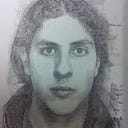Dynamic Camera Transitions: Utilizing State-Driven Cameras with Cinemachine in Unity 2021
State-Driven Cameras stand out as a game-changer, allowing developers to seamlessly switch cameras based on animation states. In this article, we will explore how to leverage State-Driven Cameras with Cinemachine in Unity 2021 to achieve smooth camera transitions during animation sequences.
State-Driven Cameras in Cinemachine are designed to switch between different camera setups automatically based on animation states. By defining camera states for specific animation states, developers can effortlessly create dynamic and contextual camera transitions that enhance the overall visual storytelling through many types of in-game events or triggers.
Integrating Cinemachine and Animator: To use State-Driven Cameras effectively, we need to integrate the Unity Animator component with Cinemachine. The Animator controls the animation states of characters or objects, while Cinemachine handles the camera transitions, ensuring a seamless connection between animation and camera changes.
I’ve created two new Animations (Normal_View and CloseUp_View) and added the Normal View to the player so the player now can be selected as Animated Target.
Created a Bool Parameter inside the Animator.
Begin by creating the necessary virtual cameras in the scene using Cinemachine State-Driven Camera, for this I’ll use two cameras for a third person character and a second view, closer analyzing/aiming perspective. Define camera states for each camera setup, specifying different positions, rotations, and field of view settings that correspond to various animation states. Inside the Virtual Camera Children, you may add the extra cameras needed as the component comes with one camera by default. As soon as I drop the Player inside the Animated Target, I can then select the States in the State List.
Both states need a condition parameter for the Aiming bool, on the Normal view, when true, go to state 2; on the CloseUp_view, when false go to state 1. Make sure to remove Has Exit Time for this case.
Mapping Cameras to Animation States: Through the State-Driven Cameras feature, developers can map cameras to specific animation states. This allows the camera to automatically switch to the appropriate camera state when the associated animation state is triggered.
The first cam is a wide-angle FOV of 60 and has more distance from the player in the shoulder offset and is centered.
The second camera has a closer look at the shoulder and a smaller FOV of 40 for the zoom effect.
Dynamic Camera Transitions: As the character or object transitions between animation states, the State-Driven Cameras smoothly switch between camera states, providing dynamic and contextual camera angles. This fluidity enhances the immersion and visual cohesiveness of the gameplay experience.
With this bool, we can now condition this states to occur with a button press, a trigger collider and many other ways.
Advanced Transition Parameters: Cinemachine provides developers with fine-grained control over camera transitions through adjustable blend times and custom easing curves. This allows for precise control of camera switches, ensuring the transitions align perfectly with the animation flow.
State-Driven Cameras with Cinemachine in Unity 2021 introduce a new level of flexibility and immersion to camera transitions during animation sequences. By combining the Animator component with Cinemachine’s State-Driven, developers can seamlessly switch between camera setups based on animation states, enhancing the visual storytelling and overall gameplay experience.
Dynamic camera transitions, driven by the animation states of characters or objects, create a cohesive and engaging visual experience for players. With the ability to fine-tune camera parameters, State-Driven Cameras offer precise control over camera switches, resulting in smooth and natural transitions that elevate the game’s immersion and cinematic quality.
